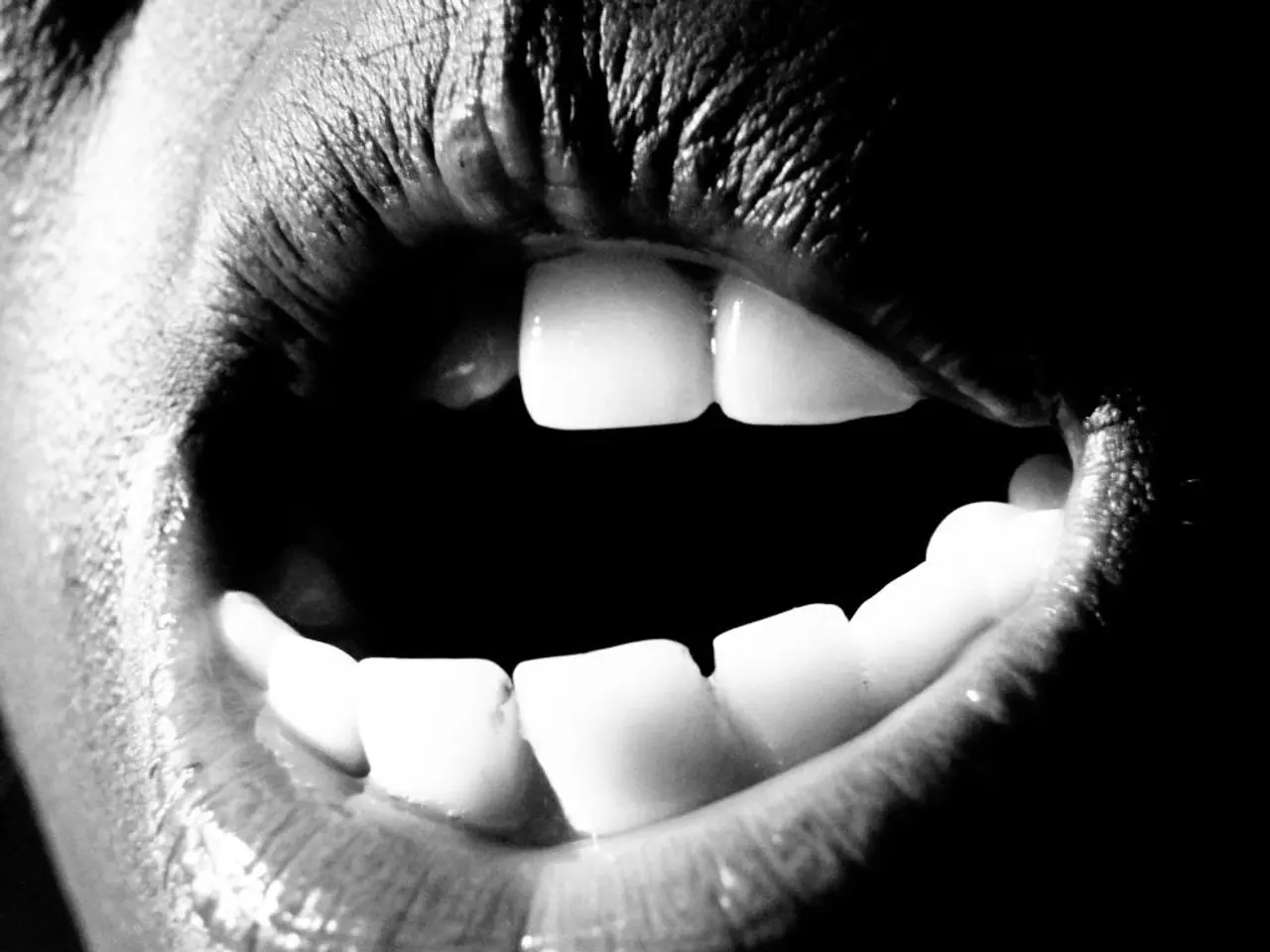Solutions for Correcting Misaligned Mandible (Jaw)
In the realm of oral health and facial aesthetics, a crooked jaw can be more than just a cosmetic concern. It can be a symptom of various underlying conditions, from genetics and dental issues to stress and lifestyle factors.
One such condition is bruxism, or teeth grinding, which can cause a crooked jaw and affect facial symmetry primarily due to the excessive stress it places on the jaw muscles and joints. This repetitive strain can lead to muscle imbalances, uneven wear on teeth, and alterations in jaw alignment or positioning over time. Consequently, the jaw may deviate from its normal alignment, resulting in facial asymmetry.
Beyond bruxism, other potential causes of a crooked jaw include genetic and congenital factors such as cleft palate, hemifacial microsomia, or other birth defects affecting jaw development. Jaw deformities present from birth can be influenced by genetic heredity, environmental factors during pregnancy, or folic acid deficiency.
Dental issues and malocclusion, conditions like overbite, underbite, crossbite, open bite, crooked or crowded teeth, and tooth extractions, can also shift jaw position and cause facial asymmetry. Trauma or injury can misalign bones and jaw joints, contributing to asymmetry. Neurological and muscular conditions may affect muscle tone and control around the jaw, leading to asymmetry over time.
Environmental and lifestyle factors, such as chewing on one side, poor posture, or sleeping consistently on one side, can cause muscle imbalances that influence jaw position. Age-related changes, including sagging skin, loss of facial fat, weaker bones, and muscles, can create a droopier and less symmetrical appearance, particularly in the lower face.
In children and adolescents, genetics and habits such as thumb sucking or prolonged pacifier use can significantly influence jaw growth, potentially leading to crooked or misaligned jaws.
Orthodontic treatments and, in some cases, surgical interventions are commonly used to correct jaw misalignment and restore facial symmetry.
Interestingly, a prominent jawline is often associated with attractiveness and perceptions of masculinity. However, some men are willing to undergo procedures like filler, face BBLs, or even breaking their jaws apart to achieve a stronger jawline.
Ethan, a 37-year-old individual who chose to remain anonymous for privacy reasons, is one such individual grappling with a crooked jaw. His teeth grinding habit, a likely result of stress, changed the shape of his face and affected his confidence in relationships. Ethan's jaw issue was not apparent to him until it started impacting his personal life.
Dr. Jeremy Manuele, a board-certified orthodontist, states that Ethan is not alone in experiencing jaw issues due to teeth grinding. Teeth grinding, also known as bruxism, is a common response to stress. The rise of social media has been linked with an increase in awareness of one's appearance, potentially contributing to insecurities about facial features.
Breathing issues like sleep apnea can also cause an uneven jaw. Addressing these issues with an ENT can improve airflow and potentially correct jaw asymmetry. The masseter muscle, one of the main muscles in the jaw, can be significantly impacted by teeth grinding (bruxism), potentially causing a visibly asymmetrical face.
As more men become conscious of their appearances and insecurities about their jawlines, there's a growing trend towards plastic surgery, particularly facial procedures. Ethan's story serves as a reminder of the importance of addressing teeth grinding and its potential consequences on oral health and facial aesthetics.
- In the field of fashion and beauty, an asymmetrical jawline can be more than a cosmetic concern.
- It can be a symptom of various underlying conditions, from stress and lifestyle factors to medical conditions and genetic factors.
- A prominent jawline is often associated with attractiveness and perceptions of masculinity, but some men seek to alter it through procedures like filler and face BBLs.
- Bruxism, or teeth grinding, can cause a crooked jaw and affect facial symmetry primarily due to the excessive stress it places on the jaw muscles and joints.
- Consequentially, the jaw may deviate from its normal alignment, resulting in facial asymmetry.
- Dental issues and malocclusion, such as overbite, underbite, crossbite, open bite, crooked or crowded teeth, and tooth extractions, can also shift jaw position and cause facial asymmetry.
- Jaw deformities present from birth can be influenced by genetic heredity, environmental factors during pregnancy, or folic acid deficiency.
- Neurological and muscular conditions may affect muscle tone and control around the jaw, leading to asymmetry over time.
- Environmental and lifestyle factors, such as chewing on one side, poor posture, or consistently sleeping on one side, can cause muscle imbalances that influence jaw position.
- Age-related changes, including sagging skin, loss of facial fat, weaker bones, and muscles, can create a droopier and less symmetrical appearance, particularly in the lower face.
- In children and adolescents, genetics and habits such as thumb sucking or prolonged pacifier use can significantly influence jaw growth, potentially leading to crooked or misaligned jaws.
- Orthodontic treatments and, in some cases, surgical interventions are commonly used to correct jaw misalignment and restore facial symmetry.
- Beyond orthodontic treatments, certain lifestyle changes, such as managing stress and improving posture, can also help alleviate jaw issues.
- Addressing breathing issues like sleep apnea can improve airflow and potentially correct jaw asymmetry.
- Issues related to dental health and jaw alignment can potentially impact one's self-confidence and personal relationships.
- The rise of social media has been linked with an increase in awareness of one's appearance, potentially contributing to insecurities about facial features.
- In the realm of wellness and health, it's crucial to prioritize oral health as part of overall well-being.
- Unaddressed jaw issues can lead to chronic diseases, such as TMJ disorder, which can cause pain and discomfort.
- Proper nutrition, regular exercise, and relaxation techniques are essential in maintaining good health and wellness, including oral health.
- Workplace wellness programs can provide resources for managing stress, improving posture, and promoting good health practices.
- In the field of medical conditions, it's essential to address jaw issues and their underlying causes to prevent complications.
- Chronic diseases, like cancer, respiratory conditions, and digestive health issues, can affect jaw alignment and cause facial asymmetry.
- Eye-health, hearing, and cardiovascular health should also be taken into consideration when addressing jaw issues.
- Skin-care and therapies for treating autoimmune disorders, mental-health concerns, and neurological disorders may indirectly help improve jaw alignment by addressing the root causes of these conditions.
- Nutrition plays a crucial role in overall health and can impact jaw health, as certain vitamin and mineral deficiencies can contribute to jaw issues.
- In the realm of technology, cybersecurity practices should be implemented to protect personal and financial information related to health and wellness.
- Finance plays a significant role in accessing healthcare and dental services. Insurance coverage and financial planning can help manage the costs associated with treating jaw issues.
- In the world of personal finance, wealth management strategies can help individuals save for future medical expenses and maintain financial stability.
- Lifestyle factors, such as diet, exercise, stress management, and sleep habits, all play a part in maintaining good oral health and facial aesthetics.




